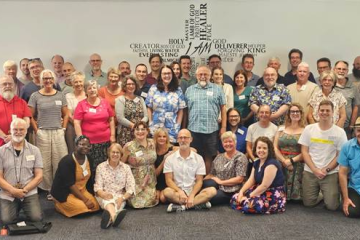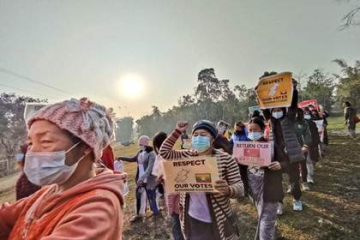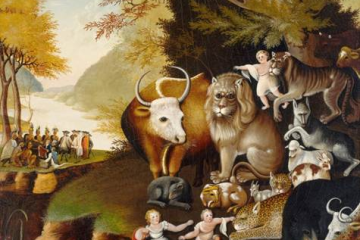John 20:19-31 (No sermon recording available this week)
IT was the day after Jesus’ death according to John’s account, the first day of the week. Mary had been to the tomb early that morning, seen the empty tomb, and met Jesus whom she mistook for a gardener. Peter and another disciple too had gone to the tomb, but now … it was evening and we read that the disciples had all gathered inside a small room, in fear! What was their fear? No doubt too, given what Mary would have told them, and what Peter and the other disciples to some degree would have confirmed, there would have a measure of grief and loss, uncertainty and confusion mixed with their fear. Was it true; was Jesus alive? And John’s account says it was then that Jesus came and stood among them and said this ‘Peace be with you’, not once but twice. Why twice? It’s almost as if the writer wants us really to remember it.
In our ANZAC day service we are invited to remember and not forget the pain of war. We are invited to remember, what the writer Robin Prior suggests in his book ‘Gallipoli – The End of the Myth’, that Galipoli was the great lost opportunity – a story of courage and mateship, but also a story where our young people made a disastrous landing, a story riddled with errors of judgment and poor strategic planning and officer incompetence. Lest we forget we are told. This is a phrase that was actually first used in an 1897 poem written by Rudyard Kipling which occurs 8 times and is continually repeated – God of our fathers known of old, Lord of our far flung battle line, Beneath whose awful hand we hold dominion over palm and pine, Lord God of Hosts, be with us yet, Lest we forget, lest we forget.
In similar way to the writer of John’s Gospel, Kipling wants us to remember. But remembering can be blurred. While we know well about the so-called ANZAC spirit and the Australian values forged in war, values that we take pride in now – mateship, sacrifice, a fair go for everyone – what do we really remember and what do we remember in terms of the life for those who returned.
The Landline program called ‘They were back to being black: the land withheld from returning indigenous soldiers’ run recently on the ABC helps us remember what we may have forgotten or was never told. How the gvt tried to assist the diggers on their return with a soldier settlement scheme which granted them parcels of land – gifts of peace – gifts to help in their reintegration, gifts of thanks – but not for the Indigenous soldiers who fought alongside white comrades. On their return, they became confronted with another war – a racial war and the inequality of a nation deeply divided by White Australia laws.
Of the successful applicants among the thousands of applications two Indigenous soldiers were successful in Victoria and one in NSW, some in WA. They were given land because they were half castes – they looked white. But while we might think them lucky the program revealed that the parcels of land given to them, were hardly gifts of anything of worth. The land was unviable: too far from the markets, poor in soil quality, and one for Mr Pepper in Victoria, the parcel of land given to him was on a flood plain. Three times in six years massive floods destroyed his crops. He made desperate pleas to the Victorian government asking for a swap of land to a more manageable one in a warmer climate in his traditional country. Percy Pepper was a Gunaikurnai man from Gippsland in Eastern Victoria, but his plea for more viable land fell on deaf ears. And apparently in one final indignity, he put his land up for Auction and because it was then under water it failed to reach any kind of value so he just left the house, and pursued laboring work.
Said one family member: they were fighting for this country because that put them on an even-keel with White Australia, but that even-keel was soon taken away when they came back from the wars and they were back to being black.
John’s Gospel wants us to remember the Easter message of Jesus standing with them, and offering Peace – and the ANZAC message is Lest we forget? What should we be remembering and what should we not forget!
Because surely our remembering on ANZAC day is not just the remembering of our young at war, its not just remembering the fallen, and parading the survivors but more importantly remembering how and why the fallen fell, it’s treasuring what did happen, and what were the mistakes that lead to the horror of war. Our remembering must speak truth. Our remembering must honour and herald peace! We must not blur the remembering. We must tell truth, for only then can true peace be found.
In his nobel prize for literature speech in 1980 the Polish born poet Czelaw Milosz wrote that our planet seems to get smaller every year, with its fantastic proliferation of mass media, but we are witnessing a process characterised by a refusal to remember! History is present but it’s blurred … The truth is not told or its just forgotten.
The Los Angeles Times apparently stated that the number of books in various languages were increasing that denies the Holocoaust ever took place. Says Milosc, if such an insanity is possible, is a complete loss of memory as a permanent state of mind therefore so improbable? Can we lose the sense of what peace demands of us or stands for? ANZAC day is about the first WWar but Milosc asks: Why have we forgotten or selectively not told the date of 23 August 1939 when two dictators – Stalin and Hitler – made a pact around which a secret clause was concocted that divided the spoils of the neighbourng countries namely Poland Lithuania Estonia and Latvia, the mechanisms around which probably lead to WW 2! Crimes against humanity, says Milosc, never confessed and never public denounced are a poison which destroys the possibility of unity and cooperation and friendship between nations … so much so that the only true memory is perhaps the memory of wounds.
And if any Gospel is strong about the memory of wounds it is John’s Gospel. For unlike the other Synoptics, it is only John that has Jesus’ encounter with Thomas. ‘I need to see the mark of the nails in his hands’ I need to see the wounds! And of course the richness of this story is the context of heresy in the second century where all sorts of views were being espoused about Jesus about his divinity, about his humanity about his actual death. John’s Gospel we know is written very much to counter much of this such that we have the well known texts of Jesus is the Word, Jesus was the incarnated man of flesh and the role Thomas plays here too dare I say against the tide of opinion is that he not so much doubter but apologist – his critical literary role here is to herald that the risen Jesus was the same Jesus who died on the cross. And so most powerfully we can say that Thomas was the single most Biblical character to advocate to all listeners and readers the memory of the wounds of Christ.
John’s Gospel says Jesus stood among them … Jesus stood among them in all their frightened fearful confusion and said Peace be with you. This was clearly a moment of consolation not just for the disciples in the room, but also for the church listening to the story again. And we can hear that and we should hear that, in this account of the risen Jesus, the memory of wounds that no doubt supported a persecuted church but can support us and sustain us. But the text also invites us to think about what we should be remembering? And what this Peace of Jesus requires of us?
And I suggest that what we should be remembering is that Peace starts when we as Jesus did stand with the fearful and the broken in our world, when we actively and consciously listen to the tears of despair in our world. And I suggest that what peace making in the name of Jesus requires of us is to keep telling the truth, to keep seeking the truth, and to remember without blurring the facts. For peace can only come with truth. Because only then, when we tell truth can we truly share with Kipling – Lest we forget!


